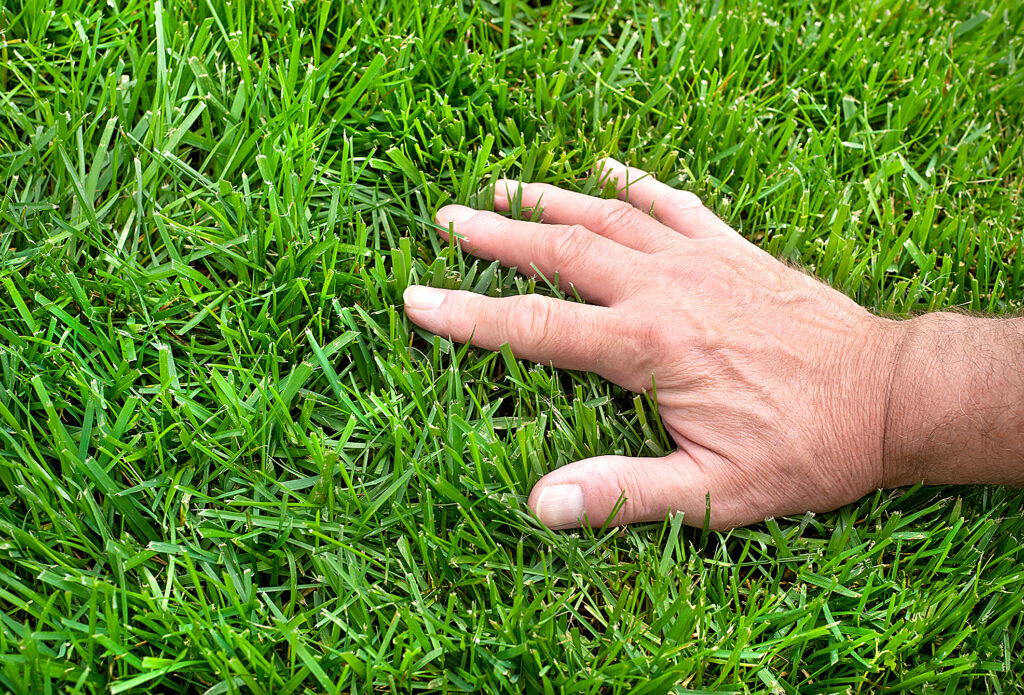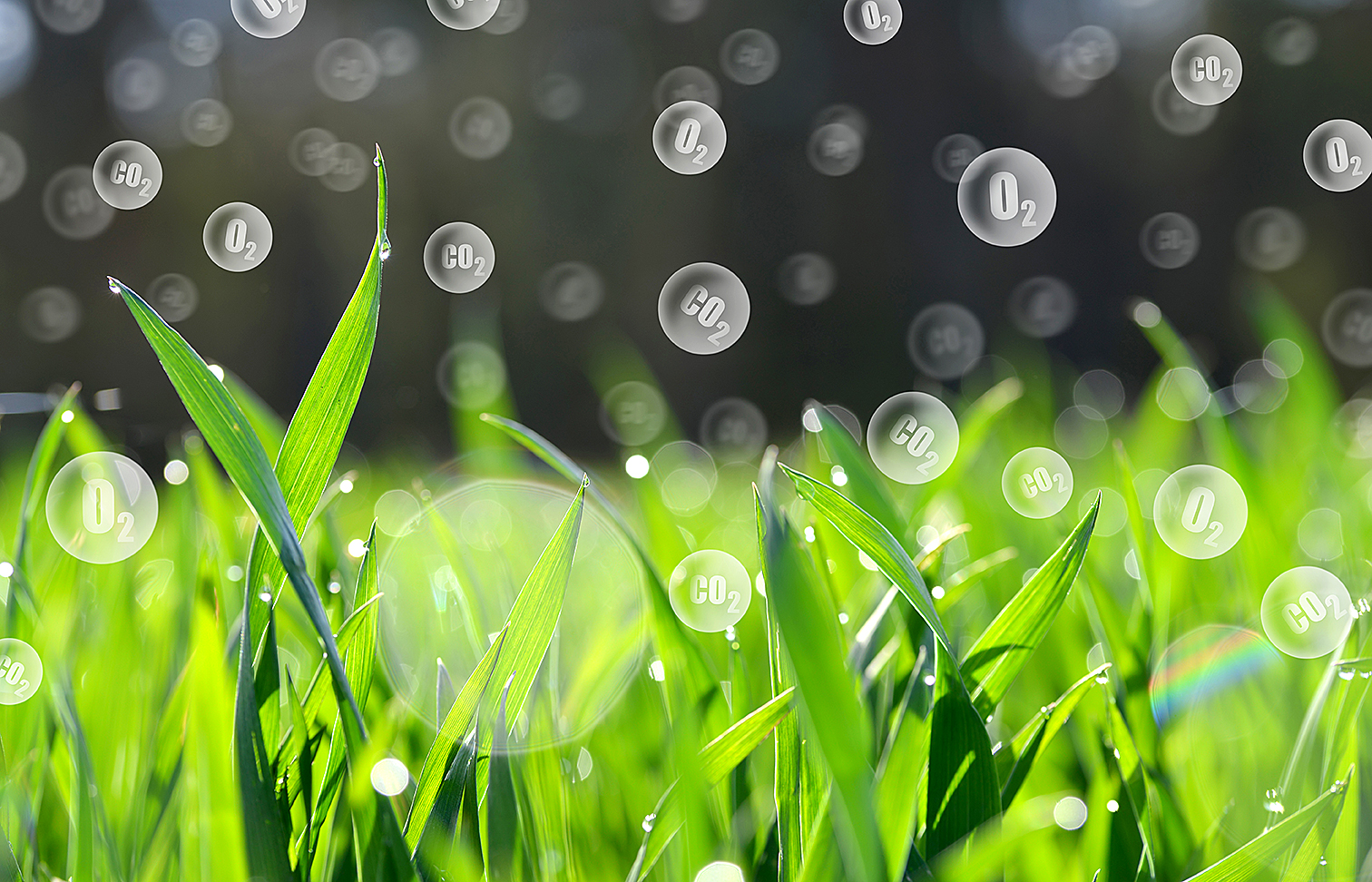

Breath easy with your lawn
Natural lawns provide many benefits beyond their aesthetic appeal. Studies have found that a lawn has a positive impact on the environment and our lives.

Lawns create oxygen
Just like our friends the trees, grass cleans the air we breathe by absorbing carbon dioxide and releasing oxygen. According to The Lawn Institute, “One 5,000 square feet grass lawn can produce enough oxygen each day to support 14 to 34 people, depending on location.” It also acts as a filter, trapping dust and other particles present in the air. Once trapped, air particles and dust will be reabsorbed into the soil via dew and precipitation. This prevents the particles from traveling further and disrupting other habitats.
Lawns regulate water runoff
Water runoff can be harmful to the environment by carrying pollutants like petroleum products, fertilizers, pesticides, and other contaminants. Fortunately, established lawns can regulate the water runoff with their extensive root systems,, that capture pollutants and help break them down as they pass through the soil.
Lawns cool us down
Covering the ground with its green blades, grass is found to be significantly cooler when compared to other outdoor surfaces like asphalt or concrete. It works by a process called evapotranspiration. Basically, water is transferred to the atmosphere with the help of evaporation, and transpiration. Cooler temperatures outside will result in cooler temperatures inside, reducing the need for air conditioning on those hot Summer days.
With the many advantages of having a lawn, one would be hard pressed to find reasons not to have one. Having a lawn adds to the beauty of the neighborhood. Knowing that natural lawns can also aid in reducing air and water pollution while cooling things off is just icing on the cake.
More Posts


Turn Your Patio into a Tropical Oasis
Plan the arrangement of the crops, choosing the vegetables to